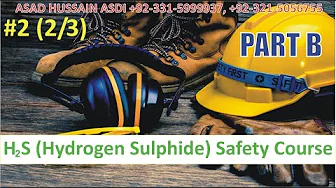LICQual Confined Space Entry Specialist (CSS) Course in Islamabad In Pakistan (Rawalpindi, Peshawar)
LICQual Confined Space Entry Specialist (CSS) Course in Islamabad
This may be as routinely as conceivable a challenging and energizing course, highlighting work affiliation and passed on by lively master guides all sharp to brace you towards Success
“The LICQual Confined Space Entry Specialist (CSS) Course is the assignment advertised by LICQual and demonstrates the most noteworthy level of capability. The LICQual Confined Space Entry Specialist (CSS) Course is a sign of a level of capability anticipated of a Confined Space Entry Specialist who is able of creating and overseeing a comprehensive facility wide or corporate Confined Space Entry Specialist and administering others to do the same”
What is LICQual Confined Space Entry Specialist (CSS) Course?
LICQual Confined Space Entry Specialist (CSS) Course provides coverage of confined spaces, hazardous atmospheres, necessary equipment, and required permits including information about the hazards and hazard control methods that will permit safe work in enclosed work areas or confined spaces
Responsibilities of confines space entry specialists:
-
The three elements defining confined spaces.
-
How to assess hazardous atmospheres and other environmental hazards.
-
Instructions for using monitoring equipment.
-
Supervisor responsibilities and entrant and attendant roles.
-
The proper use of personal protective equipment.
Why this course?
This LICQual Confined Space Entry Specialist (CSS) Course delivers the knowledge and skills necessary to enter and work safely in High-Risk confined spaces and deal with emergencies, administer emergency first aid including oxygen resuscitation and CPR. This course will give you the ways to make a future in confined space environment.
Who should attend?
Employees who work in construction, agriculture, marine terminals, telecommunications, and utilities are often exposed to confined spaces and must be properly trained according to standards.
Course Content:
-
Confined Space Entry Program
-
Confined Space Assessment Responsibility and Requirements
-
Hazard Identification, Evaluation and Control
-
Atmospheric Hazards and Controls
-
Atmospheric Hazards
-
Gas Detection Sampling and Strategies
-
Gas Testing Process
-
Health and Safety Hazards
-
Health and Safety Hazards
-
Controls
-
Personal Protective Equipment
-
Hand, feet, head, hearing, etc.
-
Fall protection
-
Respirators
-
Confined Space Roles and Responsibilities
-
Confined Space Entry Team
-
Roles and Responsibilities of the Entrant, Attendant, Gas Detector, Rescue Team and the CSE Supervisor
-
Confined Space Entry Work Permit
-
Purpose of Confined Entry Work Permit
-
Required Information
-
Case Studies
-
Confined Space Entry Rescue
-
Importance of Emergency Rescue Plan
-
Roles and Responsibilities of Rescue Plan
-
Training Requirements for Rescue Personnel
-
First Aid Requirements
-
Accident/Incident Reporting
-
Accident/Incident Reporting- Employer
-
Accident/Incident Reporting- Commission
-
Accident/Incident Reporting- OH&S Division
-
Accident/Incident Investigation Procedure
Learning outcomes:
After completing this course the learner will know about the
-
Current legislation
-
Recognition of confined spaces
-
Human respiratory system
-
Appreciation of the different types of atmospheres
-
Use of gas detection equipment in hazardous atmospheres
-
Use of personal protection equipment, i.e. ropes, harnesses and man riding hoists
-
Use of escape breathing apparatus
-
Different types of full working breathing apparatus, and ancillary equipment
-
Pre-entry checks on equipment
-
Safe systems of work for entry into confined spaces
-
Methods of communication
-
Manning levels
-
Practical use of escape set and full working breathing apparatus
-
Vertical entry and egress using a tripod and winch
-
Diseases and personal hygiene associated with confined spaces
-
Awareness of the need for periodic examinations of equipment
-
First aid regulations
-
First aid equipment
-
Situation assessment and primary assessment
-
Airway management
-
Respiratory arrest
-
Mouth to mouth resuscitation
-
Artificial ventilation
-
Circulatory collapse
-
Cardio pulmonary resuscitation (CPR)
-
Role of oxygen in resuscitation
-
Awareness of the different types of resuscitation equipment, including automatic resuscitators; i.e., MARS or Pneupac, Vent aid or similar
-
Laerdal pocket mask, and bag and mask
-
Treatment for choking
-
Shock
-
Control of bleeding
-
Management of the unconscious casualty
-
Head injuries, fractures and burns
Benefits:
After completing this course the learner will have all the given abilities and to control hazards which are given below
-
Confined spaces are dangerous places to work in and the greater the risk, the more training you will need to enter them safely.
-
Confined spaces can be located in a variety of different environments such as factories, warehouses, power plants etc. The environment can affect how people are trained to operate in these environments.
-
Confined spaces are often dirty and dusty making them hard on the eyes, noses and throats of those who work in them for long periods of time. This can pose a health risk to you or your co-workers if you don't take precautions like wearing protective clothing during your training or after working inside one for some time period."
Career opportunities:
-
Industrial Engineer
-
Safety Engineering Specialist
-
CHST and STSC by the American Board of Certified Safety Professionals (BCSP)
-
ISO 45001 and 14001 Lead Auditor
-
Map Location For LICQual Confined Space Entry Specialist (CSS) Course in Islamabad In Pakistan










